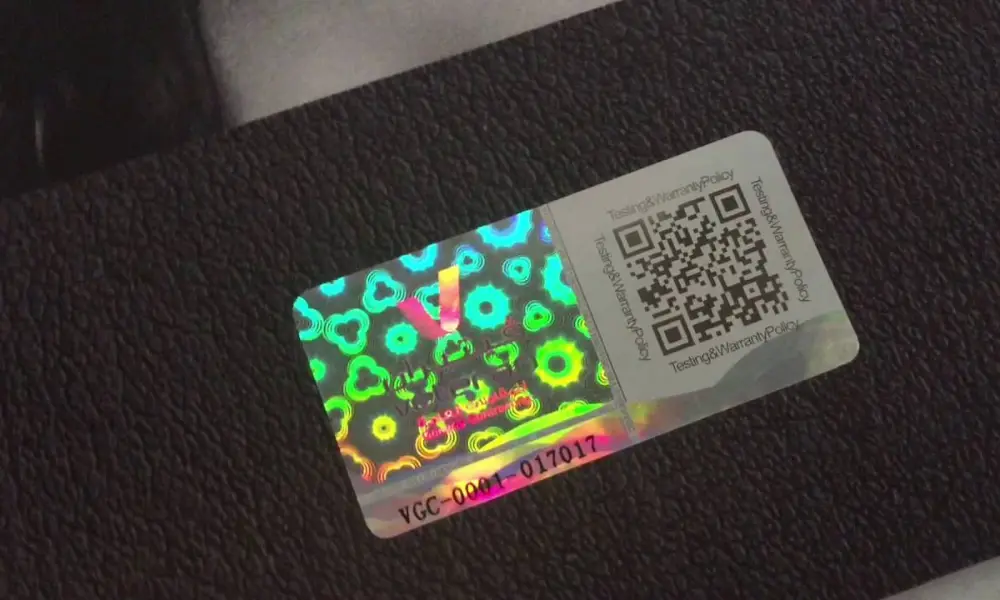Holographic stickers are not just visually appealing; they also play a crucial role in security. Their unique properties make them ideal for protecting products and information from counterfeiting and tampering. This article explores the use of holographic stickers in security, detailing how they work, their applications, and their effectiveness in safeguarding products and information.
How Holographic Stickers Work
Holography Basics
Holography involves recording and reconstructing light patterns to create three-dimensional images. Holographic stickers are made using a laser to record an interference pattern on a photosensitive material. When light reflects off this material, it creates a holographic effect.
Security Features
The complexity and precision of holographic images make them difficult to replicate. Holographic stickers often incorporate additional security features, such as microtext, serial numbers, and QR codes, to enhance their effectiveness in preventing counterfeiting.
Applications of Holographic Stickers in Security
Anti-Counterfeiting
One of the primary uses of holographic stickers is in anti-counterfeiting. Industries such as pharmaceuticals, electronics, and luxury goods use holographic stickers to ensure product authenticity. The unique holographic patterns are difficult for counterfeiters to reproduce, providing a reliable method of verification.
Tamper-Evident Seals
Holographic stickers are also used as tamper-evident seals on packaging. These stickers are designed to show clear signs of tampering if removed or altered, making it easy to detect unauthorised access. This application is particularly important for products like medications, food items, and sensitive documents.
Secure Documentation
Governments and organisations use holographic stickers on secure documents, such as passports, driver’s licenses, and identification cards. The holographic images and additional security features help prevent forgery and ensure the authenticity of these documents.
Effectiveness of Holographic Stickers
Difficult to Replicate
The intricate patterns and advanced production techniques used to create holographic stickers make them challenging for counterfeiters to replicate accurately. This high level of difficulty provides a strong deterrent against counterfeiting.
Easy Verification
Holographic stickers can be easily verified by both consumers and officials. The unique holographic effects are visible to the naked eye, allowing for quick and straightforward authentication without needing specialised equipment.
Layered Security
Holographic stickers often include multiple layers of security features, such as hidden images, microtext, and serial numbers. These additional layers further enhance their effectiveness in preventing counterfeiting and tampering.
Case Studies: Successful Use of Holographic Stickers in Security
Pharmaceutical Industry
The pharmaceutical industry faces significant challenges with the counterfeit medications. Companies like Pfizer use holographic stickers on their packaging to ensure product authenticity and protect consumers from harmful counterfeit drugs. The stickers’ unique holographic patterns and additional security features provide a reliable method of verification.
Government Documents
Many governments use holographic stickers on official documents to prevent forgery. For example, the U.S. Department of State includes holographic security features on passports to ensure their authenticity. The intricate holographic patterns and layered security features make it nearly impossible for counterfeiters to create convincing forgeries.
Challenges and Limitations
Cost
One of the main challenges of using holographic stickers for security is the cost. The advanced technology and materials required for production can be expensive, making it a significant investment for businesses and organisations.
Technological Advancements by Counterfeiters
As technology advances, counterfeiters also develop more sophisticated methods. While holographic stickers remain effective, continuous innovation and enhancement of security features are necessary to stay ahead of counterfeiters.
Future Trends in Holographic Security
Advanced Authentication Technologies
The future of holographic security will likely include more advanced authentication technologies. Combining holographic stickers with digital verification methods, such as blockchain and artificial intelligence, can provide even greater security and protection against counterfeiting.
Sustainable Materials
As environmental concerns grow, there is a push toward using more sustainable materials in holographic sticker production. Innovations in eco-friendly materials and production processes can help reduce the ecological impact of holographic stickers while maintaining their security effectiveness.
Conclusion
Holographic stickers play a vital role in security, protecting products and information from counterfeiting and tampering. Their unique properties and advanced features make them an effective tool for ensuring authenticity and preventing unauthorised access. As technology continues to evolve, the use of holographic stickers in security will likely expand, incorporating even more advanced and sustainable solutions.



































